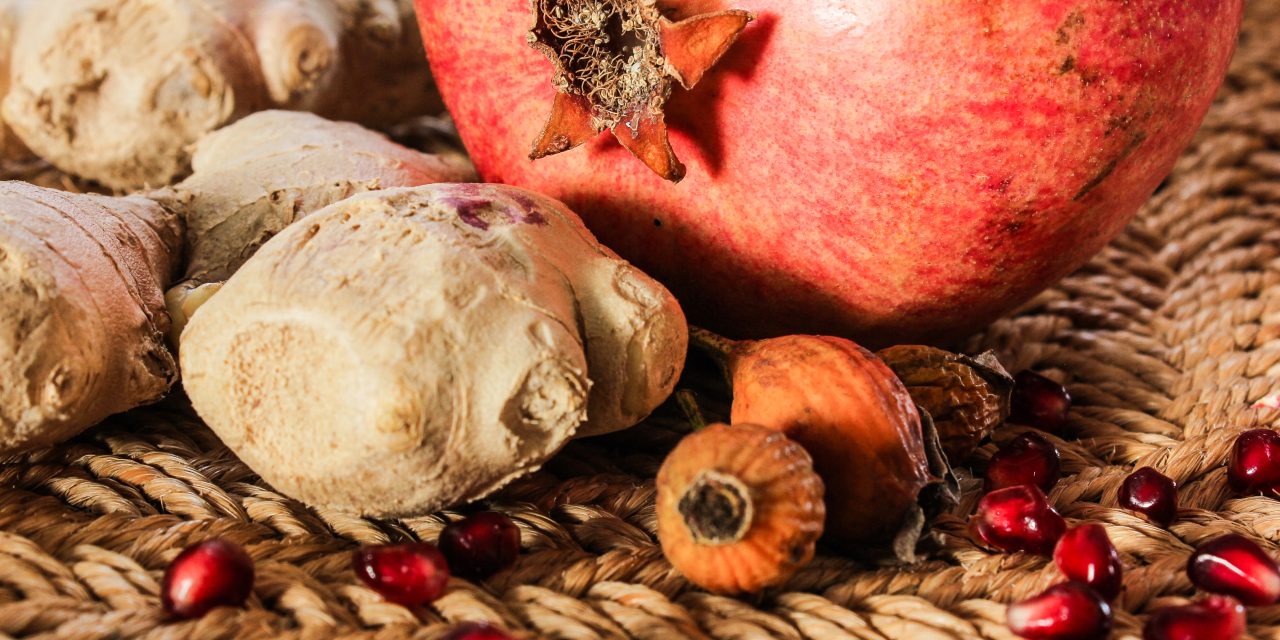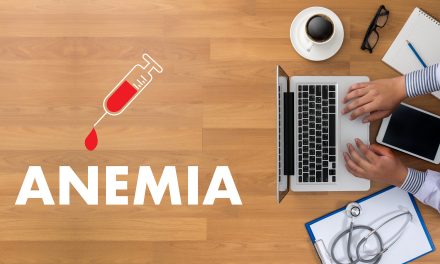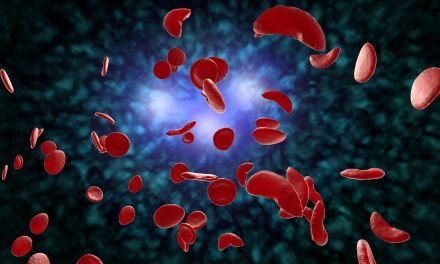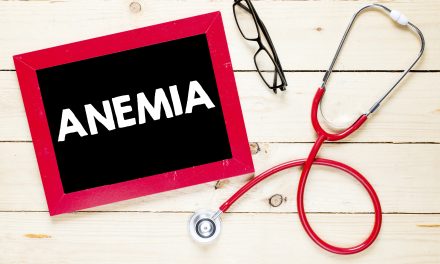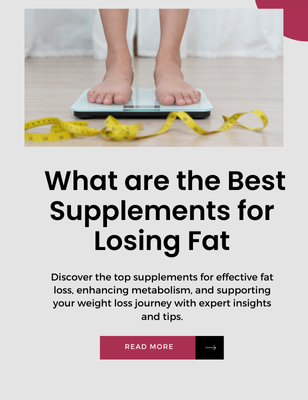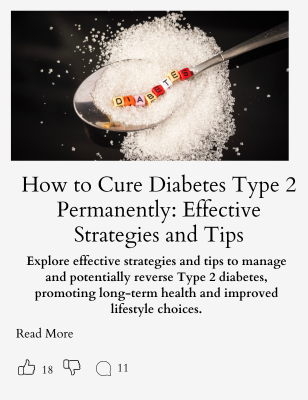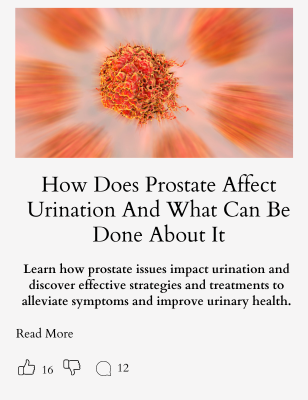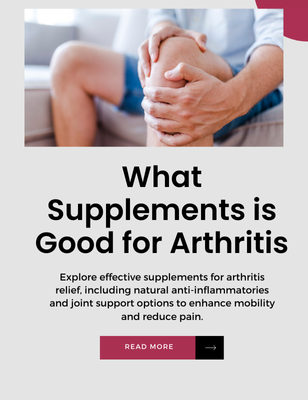Anemia, a condition where the body lacks enough healthy red blood cells to carry sufficient oxygen to its tissues, can lead to fatigue and weakness among other symptoms. Often caused by iron deficiency, this common health concern can be managed and sometimes even reversed by incorporating a balanced diet rich in iron and essential nutrients. It’s important to understand the role that food plays in maintaining iron levels and overall health, as diet is a cornerstone in the prevention and management of anemia.
Adjusting one’s dietary habits can be an effective way to combat anemia. Foods high in iron, such as lean meats, beans, leafy greens, and fortified cereals, are pivotal in boosting the body’s hemoglobin levels. Additionally, vitamin C enhances iron absorption, so including fruits and vegetables like oranges, strawberries, and bell peppers in meals can be beneficial. Other essential nutrients like vitamin B12 and folic acid, found in eggs, milk, and whole grains, are also vital for preventing and addressing anemia. By selecting the right foods and preparing nutrient-rich meals, individuals can significantly impact their iron levels and overall well-being.
Key Takeaways
- Diet plays a critical role in managing anemia, with emphasis on iron-rich foods and nutrients that aid iron absorption.
- Incorporating vitamin C alongside iron intake enhances the body’s ability to absorb iron, improving anemia treatment effectiveness.
- Regular monitoring of anemia levels and consulting with a healthcare provider are important for proper management and prevention of recurrence.
Understanding Anemia
Anemia is a condition characterized by a deficiency in the number of red blood cells or the quantity of hemoglobin they contain. This can lead to reduced oxygen transport throughout the body, affecting overall health.
Types of Anemia
Iron-deficiency anemia: The most common type where the body lacks enough iron to produce hemoglobin.
Vitamin-deficiency anemia: Often due to a lack of vitamin B12 or folate.
Hemolytic anemia: Where red blood cells are destroyed faster than they can be made.
Aplastic anemia: A rare condition where the body does not produce enough new blood cells.
Sickle cell anemia: A genetic disorder leading to the production of abnormally shaped red blood cells.
Symptoms of Anemia
- Fatigue and weakness: Due to insufficient oxygen in the tissues.
- Shortness of breath: Especially during exercise, as the demand for oxygen increases.
- Pale or yellowish skin: Reflecting the reduced number of red blood cells.
- Irregular heartbeats: Because the heart has to pump more blood to compensate for the lack of oxygen.
- Chest pain: A severe symptom that can indicate heart strain.
Role of Diet in Anemia Management
Iron-rich foods: Consuming meat, beans, and fortified cereals can help increase iron levels.
Vitamin C: Enhances iron absorption, so it’s beneficial to consume citrus fruits and vegetables alongside iron-rich foods.
B12 and folate: Essential for red blood cell production; found in animal products and leafy greens.
Avoiding inhibitors: Substances like coffee and tea can inhibit iron absorption and should be consumed moderately.
Nutritional Foundations for Anemia
Anemia’s primary nutritional concern is the replenishment of deficient essential nutrients that are vital for red blood cell formation and function.
Importance of Iron
Iron is a critical component of hemoglobin, the oxygen-carrying protein in red blood cells. Dietary iron comes in two forms: heme iron and non-heme iron. Heme iron, found in animal products such as red meat, poultry, and fish, is more readily absorbed by the body. Non-heme iron, found in plant-based foods like lentils, beans, and spinach, is less easily absorbed. The following are rich sources of iron:
- Heme iron sources:
- Beef
- Chicken liver
- Oysters
- Non-heme iron sources:
- Tofu
- Lentils
- Fortified cereals
Vitamin C for Iron Absorption
Vitamin C significantly enhances the absorption of non-heme iron when consumed together. It converts iron into a form that is more readily absorbed in the intestine. Foods high in vitamin C include:
- Fruits:
- Oranges
- Kiwis
- Strawberries
- Vegetables:
- Broccoli
- Bell peppers
- Tomatoes
Pairing these with non-heme iron sources can improve iron uptake, for example, adding lemon juice to spinach salads or consuming orange juice with fortified breakfast cereals.
Folate and Vitamin B12
Both folate (vitamin B9) and vitamin B12 are essential for the production of red blood cells. A deficiency in either vitamin can lead to anemia. Sources of folate include:
- Folate-rich foods:
- Leafy greens
- Legumes
- Avocado
Vitamin B12 is found predominantly in animal products, making it especially important for vegetarians and vegans to seek alternative sources or supplements:
- Vitamin B12 sources:
- Animal liver and kidneys
- Clams
- Fortified plant-based milks
Iron-Rich Foods
Incorporating iron-rich foods into one’s diet is a fundamental strategy for addressing iron-deficiency anemia. Iron can be found in a variety of meats, seafood, and plant-based sources.
Meat and Seafood Sources
The most efficient sources of heme iron, which is readily absorbed by the body, come from meat and seafood. Examples include:
- Beef liver: Among the richest sources of iron, with 6.5 mg per 3-ounce serving.
- Oysters: Seafood like oysters contain substantial amounts of iron, offering 8 mg per 3-ounce serving.
- Chicken: A 3-ounce serving of dark chicken meat provides about 1.1 mg of iron.
It’s important to note that vitamin C can enhance the body’s absorption of iron from meat.
Plant-Based Sources
For those seeking non-meat options or following a vegetarian or vegan diet, there are several plant-based foods high in non-heme iron:
- Spinach: A half-cup of cooked spinach contains 3.2 mg of iron.
- Legumes: Foods like lentils and chickpeas pack about 3-4 mg of iron per half-cup serving.
- Seeds: Pumpkin, sesame, or squash seeds can provide around 1-4 mg of iron per ounce.
To improve the absorption of non-heme iron, it’s beneficial to consume these foods with vitamin C-rich foods like tomatoes or citrus fruits.
Recipes and Meal Ideas
Incorporating iron-rich foods into one’s diet is key to managing anemia. The following meal ideas ensure a variety of nutrients, including vitamins C and B12, to aid iron absorption and hemoglobin production.
Energizing Breakfasts
- Iron-Fortified Cereal: A bowl of iron-fortified cereal with strawberries and a glass of orange juice to enhance iron absorption.
- Spinach Omelet: An omelet made with spinach, tomatoes, and bell peppers, offering a mix of iron, vitamin C, and protein.
Nourishing Lunches
- Lentil Salad: A lentil salad with lemon dressing, mixed with fresh bell peppers, cucumber, and tomatoes for a vitamin C boost.
- Quinoa and Black Bean Bowl: Quinoa serves as an excellent plant-based iron source, while black beans add fiber and additional iron.
Hearty Dinners
- Grilled Chicken with Broccoli: Chicken thighs provide heme iron, which is easily absorbed; serve with broccoli for an added dose of vitamins.
- Salmon with Roasted Sweet Potatoes: Salmon, rich in B vitamins, paired with sweet potatoes which are high in beta carotene and vitamin C.
Supplementing Your Diet
In addressing anemia, dietary supplementation can be a critical component. It’s essential to choose supplements wisely and know when they are necessary.
When to Consider Supplements
Individuals should consider supplements if they are unable to meet their nutrient needs through diet alone. For instance, they may have increased requirements due to pregnancy or have restrictions like vegetarianism that make it hard to obtain certain nutrients. It is particularly important when dietary restrictions or health conditions prevent the absorption or consumption of iron, vitamin B12, folate, and vitamin C, which are crucial for preventing and treating anemia.
Selecting the Right Supplement
When choosing a supplement, they must ensure it contains the specific nutrients that are lacking. Here’s a straightforward approach to selection:
- Iron: Essential for anemia; choose ferrous sulfate, ferrous gluconate, or ferrous fumarate for better absorption.
- Vitamin B12: Necessary for those with pernicious anemia or vegans; methylcobalamin and cyanocobalamin are common forms.
- Folate: Critical for pregnant women to prevent neural tube defects; look for folic acid supplements.
- Vitamin C: Enhances iron absorption; select a pure ascorbic acid supplement or a multivitamin containing vitamin C.
Remember, they should consult a healthcare provider before starting any supplement regimen to ensure suitability and adjust dosages appropriately.
Lifestyle Considerations
In addressing anemia through diet, one’s lifestyle plays a crucial role. Daily habits, from physical activity to sleep patterns, greatly impact the body’s ability to absorb and utilize nutrients effectively.
Exercise and Anemia
Regular exercise can boost the body’s red blood cell count, thereby improving oxygen delivery throughout the body. It’s recommended for individuals with anemia to engage in:
- Moderate aerobic activities: such as walking, swimming, or cycling for at least 30 minutes most days of the week.
- Strength training: with light weights to help stimulate muscle growth and blood flow.
Exercise routines should be discussed with a healthcare provider to ensure safety and appropriateness for one’s specific condition.
Sleep and Recovery
Adequate sleep is vital for the body to repair itself and to effectively use the nutrients consumed:
- Sleep duration: Adults should aim for 7-9 hours of quality sleep per night.
- Sleep quality: Maintaining a regular sleep schedule and ensuring a restful environment supports the recovery and rejuvenation processes.
Individuals should consult with their healthcare provider to address sleep issues that may interfere with their anemia treatment and recovery.
Monitoring Anemia Levels
Effective management of anemia requires careful monitoring of blood parameters to assess the severity of the condition and to track the progress over time.
Regular Blood Tests
Patients should have their blood levels checked regularly through Complete Blood Count (CBC) tests. The frequency of these tests varies depending on the severity of anemia; it might be as often as every week or as little as every few months. The CBC will measure the levels of red blood cells, hemoglobin concentration, hematocrit, and mean corpuscular volume (MCV), among other parameters.
- Recommended Testing Frequency:
- Severe Anemia: every 1-2 weeks
- Moderate Anemia: monthly
- Mild Anemia: every 3-6 months
Interpreting Lab Results
Interpreting lab results requires a clear understanding of the reference ranges for each parameter. Results outside of the normal range suggest a need for dietary adjustments or medical interventions.
- Key Blood Parameters:
- Hemoglobin (g/dL):
- Normal: Male 13.8 to 17.2, Female 12.1 to 15.1
- Anemic: Male <13.8, Female <12.1
- Hematocrit (%):
- Normal: Male 40.7 to 50.3, Female 36.1 to 44.3
- Anemic: Male <40.7, Female <36.1
- MCV (fL):
- Normal: 80 to 96
- Microcytic: <80 (associated with iron deficiency)
- Macrocytic: >96 (associated with vitamin B12 or folate deficiency)
- Hemoglobin (g/dL):
Patients should consult with healthcare professionals to understand their specific results, as many factors can influence the outcome, including age, sex, and overall health. A healthcare provider will interpret these values in context and provide guidance on managing anemia through diet and other therapies.
When to See a Doctor
While dietary changes can be effective for managing mild cases of anemia, it is crucial for an individual to seek professional medical advice in certain situations. Persistent Symptoms even after dietary improvements should prompt a visit to a healthcare provider. These symptoms might include:
- Fatigue that interferes with daily activities
- Shortness of breath
- Pale skin or mucous membranes
- Dizziness or light-headedness
- Heart palpitations
If an individual experiences severe or sudden symptoms, they should seek immediate medical attention. These could signal a more serious condition and may require urgent care.
| Symptom | Action Needed |
|---|---|
| Chest pain or severe headache | Seek emergency care |
| Fainting or severe weakness | Emergency care immediately |
Additionally, someone should consult with their doctor if they have a pre-existing condition that increases the risk of anemia, such as:
- Chronic kidney disease
- Rheumatoid arthritis
- Cancer and other chronic illnesses
Women who are pregnant or menstruating heavily should also monitor their iron levels closely, as they are at higher risk of developing iron-deficiency anemia. Regular check-ups and blood tests can help manage and prevent worsening of the condition.
In cases where dietary strategies do not lead to an improvement, or when anemia is suspected but not diagnosed, medical advice is essential. Proper laboratory tests can clarify the type and cause of anemia, leading to a targeted and effective treatment plan.
Avoiding Anemia Reoccurrence
Maintaining adequate iron levels is key to preventing the reoccurrence of anemia. Individuals who have recovered should focus on a diet rich in iron and other essential nutrients, such as vitamin C, which enhances iron absorption. They must consistently incorporate iron-rich foods into their daily meals.
Regular Dietary Practices
- Meat and Seafood: Opt for lean red meat, poultry, and seafood, which are high in heme iron—the form of iron most easily absorbed by the body.
- Vegetarian Options: Non-heme iron sources include legumes, nuts, seeds, and leafy green vegetables. These are best eaten along with vitamin C-rich foods to increase iron absorption.
- Fortified Foods: Incorporate iron-fortified cereals and bread into breakfast routines.
Optimal Nutrient Absorption
- Vitamin C: Consume fruits such as oranges, strawberries, and bell peppers alongside iron-rich foods.
- Avoid Calcium Interference: Calcium can inhibit iron absorption, so it’s prudent to consume dairy products at different times from iron-rich meals.
Regular Monitoring
- Monitor iron levels with routine blood tests as recommended by a healthcare professional.
- If iron supplements are necessary, take them according to a doctor’s advice to avoid excessive iron, which can be harmful.
Lifestyle Considerations
- Ensure a well-balanced diet that supports overall health and iron levels.
- Limit intake of coffee and tea around meal times, as they contain polyphenols that can inhibit iron absorption.
By adhering to these dietary and lifestyle modifications, individuals can greatly reduce the risk of anemia reoccurrence.
Summary and Key Takeaways
Anemia, characterized by a deficiency in red blood cells or hemoglobin, can often be addressed through diet. Iron, Vitamin B12, and Folate are critical nutrients for red blood cell production and can be found in various foods.
- Iron-rich Foods: Increase intake of iron by consuming lean meats, seafood, beans, dark leafy greens like spinach, and iron-fortified cereals.
- Vitamin B12 Sources: Include animal products such as fish, meat, poultry, eggs, and dairy, or B12 fortified foods for vegetarians.
- Folate-rich Foods: Consume more dark leafy greens, beans, peas, nuts, and fruits like bananas, melons, and lemons.
| Nutrient | Food Sources | Recommended Daily Amount |
|---|---|---|
| Iron | Meats, beans, spinach, cereals | 8-18 mg |
| Vitamin B12 | Meat, fish, dairy, fortified foods | 2.4 mcg |
| Folate | Greens, beans, peas, fruits | 400 mcg |
Individuals should ensure their diet is well-balanced and consider supplementation if directed by a healthcare provider. It’s essential to monitor iron levels to prevent iron overload, which can be toxic.
Regular blood tests can help track progress in managing anemia. If symptoms persist or worsen, one should consult a healthcare provider, as dietary changes may not suffice for all types of anemia.
Frequently Asked Questions
Proper dietary habits are essential for the management and treatment of anemia. A focus on iron-rich foods and vitamin C can enhance iron absorption, while certain drinks and meal plans may also aid recovery.
What are the best dietary practices to combat iron deficiency anemia?
Incorporating iron-rich foods like lean meats, beans, leafy green vegetables, and fortified cereals into one’s diet is beneficial. Consuming vitamin C sources like oranges or bell peppers alongside iron enhances absorption.
Which foods should be avoided to ensure effective management of anemia?
Patients should limit intake of coffee, tea, and high-calcium foods close to iron-rich meals as they can inhibit iron absorption. Minimizing consumption of whole grains and legumes during treatment may also be advised until anemia improves.
What role does diet play in the rapid recovery from anemia?
Diet plays a critical role in the recovery from anemia as it directly supplies the iron necessary for hemoglobin production. A balanced intake of iron, folate, B12, and vitamin C-rich foods supports the formation of healthy red blood cells.
Can you recommend a meal plan that helps in overcoming anemia?
A daily meal plan could include fortified oatmeal with strawberries for breakfast, a spinach salad with grilled chicken for lunch, and broiled fish with steamed broccoli for dinner. Snacks may feature dried fruit and nuts for additional iron.
What beverages contribute to increased iron absorption for anemia patients?
Consuming orange juice or other citrus-based beverages with meals increases iron absorption due to their vitamin C content. Avoiding tea, coffee, and milk around mealtimes is important for maximizing iron uptake.
How can one identify and address the early stages of iron deficiency?
Early stages of iron deficiency may exhibit as fatigue, weakness, and pale skin. One should enhance their diet with iron-rich foods and consult a healthcare provider for a proper diagnosis and advice on appropriate iron supplementation if necessary.
Conclusion
In conclusion, effective nutritional strategies for curing anemia through food involve incorporating iron-rich foods such as lean meats, poultry, fish, legumes, and dark leafy greens into the diet. Additionally, pairing these foods with sources of vitamin C can enhance iron absorption. By making informed dietary choices and working with healthcare professionals to develop a balanced meal plan, individuals can effectively address anemia and support overall health and wellness.

